By Chuck Eddy November 08, 2011 06:09PM
A quarter-century after its release (feel old now?), it is somewhat amusing, amazing and perplexing to remember that, way back then, Bon Jovi's 1986 album Slippery When Wet was actually considered a metal album — if not necessarily by metalheads themselves, then definitely by the rest of the rock world. Even in the realm of hair metal — certainly compared to bands like Guns N' Roses and Mötley Crüe — Bon Jovi just seem so doggone wholesome, at least in retrospect. Still, the power chords were there, and so, to some extent, were the visual trappings: on the backside of the cover, Bon Jovi the band may not look like they'd drowned in a vat of pink mascara and eyeliner, but their hair is pretty teased. Jon Bon himself has the obligatory-for-the-epoch scarf around his neck, and drummer Tico Torres is even wearing tight leopard-skin trousers.
Really, what a few fellas in the band almost look like — given their rhinestone cowboy boots and pants — is a modern regional Mexican group: all they need is fancy cowboy hats! On a steel horse they ride, don'cha know. And they still look Western-ish enough to have inspired Nashville country music since then; seriously, listen to Brantley Gilbert sometime. Heck, Chris Cagle and Montgomery Gentry have even covered "Wanted Dead or Alive" in the past decade. And of course there was also Bon Jovi's own 2006 No. 1 country duet with Jennifer Nettles, "Who Says You Can't Go Home." It all adds up now, right?
Anyway, back to metal. The cover of Slippery When Wet, as all fans know, was originally going to be a buxom lady with her topside stuffed into a drenched T-shirt with the album's title on it. Japan got that one, apparently, but in the U.S. the cover was much less brazen and more modest (and less metal): just the words on what is said to be a rain-soaked Hefty bag. Still, the inner sleeve did show the mostly shirtless band having a charity car wash with lots of skimpily clad models. Warrant were taking notes, no doubt.
The album, the New Jersey band's third, stayed in the Billboard 200 for 94 weeks (which, curiously, is 10 fewer than its 1985 predecessor, 7800º Fahrenheit), and was the U.S. top seller for eight of those weeks. It spawned four Top 30 singles, including the chart-toppers "You Give Love a Bad Name" and "Livin' on a Prayer" — the latter of which, especially, has been warbled several trillion times in karaoke bars since. Slippery When Wet went on to sell 12 million copies in the U.S. and 28 million worldwide. And over time, Bon Jovi — once a band not taken very seriously — managed to not only stick around for a long career that still spawns No. 1 albums, but to accumulate a certain degree of respectability as dependable, even influential legacy artists, which few would have predicted at the time. So it seems only fair, at this 25-year juncture, to chart some of the earlier music that inspired Slippery to be so, well, slippery in the first place.
Click here to listen to an accompanying playlist:
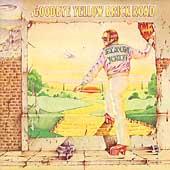 Elton John
Elton JohnGoodbye Yellow Brick Road
Goodbye Yellow Brick Road
The history of rock cowboy songs is a tale that has yet to be fully written (though I tried once, in a book paragraph). What's clear is that glam-metal campfire singalongs like Bon Jovi's "Wanted Dead or Alive," Poison's "Every Rose Has Its Thorn" ("and every cowboy sings a sad sad song"), and Tesla's "Modern Day Cowboy" were picking up on a theme that classic rockers had relied on at least since the James Gang: Styx's "Renegade," for instance. And Bad Company's "Bad Company." Etc. Anyway, even fewer cowboys live in England than in New Jersey, but this 1973 masterpiece not only features a cowboy number ("Roy Rogers"); it also has a cut called "Social Disease" — just like Slippery When Wet!
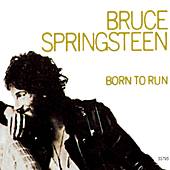 Bruce Springsteen
Bruce SpringsteenBorn to Run
Born to Run
Okay, Bruce is B.J.'s blueprint, obviously, though OK, maybe we could pick a later album by him instead; what with Tommy toiling on the docks and his union on strike so he's down on his luck and Gina working the diner all day, Born in the U.S.A. might arguably make more sense. But '75's Born to Run has its bombast going for it, plus it's clearly an album about Jersey. (Um, except when it's about Harlem, but you know what I mean.) And you can totally imagine Bon Jovi sleeping in an old abandoned beach house and sweating it out on the streets in a runaway American dream. Or at least pretending to.
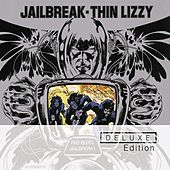 Thin Lizzy
Thin LizzyJailbreak
Jailbreak
The argument can and should be made that Phil Lynott got there before Bruce (they were both channeling Van Morrison and Catholicism, after all.) But that said, this 1976 album — and particularly "The Boys Are Back in Town," bizarrely Lizzy's only American hit single — was almost undeniably the first time that Bruceness and metalness were allowed to co-exist in the same place at the same time. And the follow-up single (which got to No. 77 stateside) was "Cowboy Song"! How comes no Nashville cats have covered that one?
Slippery When Wet is not a live album, double or otherwise. But, marketing-wise at least, it does seem to have learned lessons from this bicentennial septuple-platinum breakthrough (the best-selling long-player in 1976, just like Slippery was the best-selling long-player in 1987), which taught the music industry that a moderately "rock" album can stay at the top of the charts for 10 weeks if the pinup boy on vocals has lots of flowing, layered, sun-bronzed hair that girls can wish was theirs in more ways than one. Plus, there's the talkbox Richie Sambora used on "Livin' on a Prayer" — shades of "Do You Feel Like We Do"!
Bat Out Of Hell
This 1977 blockbuster has one of the most heavy metal LP covers of all time, so you could maybe say Mr. Loaf (as the New York Times might call him) was metallicizing Springsteen himself — even if the music doesn't sound particularly metal. What it does sound is operatic to the point of camp-Wagnerian ridiculousness, a ploy you can certainly imagine Bon Jovi taking at face value, whether they were Rocky Horror fans or not. Also, "Two Out of Three Ain't Bad" has to be considered a prototype power ballad.
As the '70s made way for the '80s (as depicted, on this album, in the ode to a thoroughly modern Millie called "Lady of the '80s"), bands on the western Canadian prairie, of all places, were seemingly trying to figure out ways to be glam rock, metal, New Wave (in theCars/Police sense), and maybe even a wee bit disco, all at the same time — but simultaneously also none of the above. Streetheart, from Saskatchewan, evolved into the Calgary combo Loverboy, who moved to Vancouver, where they hooked up with a producer named Bruce Fairbairn, who helped them shape this 1981 debut, which is a lot weirder than you think it is, especially the parts seemingly inspired by Philip Glass and the Vancouver hardcore gang D.O.A. Across the board, it shows Loverboy's early ability, as critic Ken Tucker once put it, "to kick and kiss ass with equal skill." Fairbairn was later instrumental in helping Bon Jovi do much the same thing.
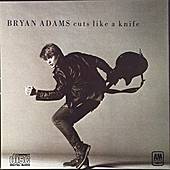 Bryan Adams
Bryan AdamsCuts Like a Knife
Cuts Like a Knife
And then — speaking of Vancouver — there was this guy. He'd started out (as Bryan "Guy" Adams!) in a late-period glam troupe called Sweeney Todd with the blatantly Marc Bolan-inspired Nick Gilder (of 1978 "Hot Child in the City" fame). He charted solo in Canada with a disco hit called "Let Me Take You Dancing" in 1979. And then he made a few early '80s albums that popped as good as they rocked, and they rocked harder than you remember. "First-class, professional, middle-of-the-road rock," as Dick Clark once said about earlier Northwesterners Paul Revere and the Raiders: hackwork, but often fantastic hackwork, and proud of it. If this 1983 LP didn't put ideas into Bon Jovi's heads, probably nothing did.
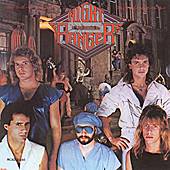 Night Ranger
Night RangerMidnight Madness
Midnight Madness
Further exploring the riddle "how can you be metal and not-metal at the same time?", there were these California boys, who definitely had long pretty hair and made pretty rock 'n' roll to boot, but also had one member who dressed up as a doctor, just like Prince's band on Dirty Mind — what the heck was that about? Later on, they developed a taste for flak jackets, perhaps since that's what actual night rangers wear. Anyway, these days (or a few years ago), they're probably best known for the inclusion of their Top 5 smash "Sister Christian" in the movie Boogie Nights. But when this album came out in late 1983, they were just happy you could "still rock in America." So they did. Obviously a crucial Bon Jovi template.
Van Halen invented pop metal, if anybody did. Even on their early albums, and even between Eddie's hammer-on virtuoso stuff and Diamond Dave's Borscht Belt shtick (both larger-than-life enough to make this accomplishment even more incredible), their hits figured out a way to make post-Deep Purple metal both sleek and super-Top 40-accessible — i.e., something that you could boogie down to at the high school hop, in the suburbs no less, without getting your polyester particularly dirty. And there was still boogie in the music, but it was immaculate boogie. As clean as the Beach Boys. And they were never slicker, in their first incarnation anyway, than on this, their final album with a frontman who doesn't usually suck. That "Jump" was basically keyboard-pumped techno-pop at heart was also not lost on Bon Jovi, one assumes.
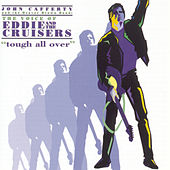 John Cafferty and the Beaver Brown Band
John Cafferty and the Beaver Brown BandTough All Over
Tough All Over
I went through this list and there are a lot of albums that I've had for YEARS. The Meatloaf one is interesting because Jon wrote a song that Meat (or is it Loaf? I just call him the bus driver from Spice World.) used on his most recent release. The Thin Lizzy one is true, Jon covered Jailbreak on his solo tour and of course The Boys are Back in Town from the Make a Difference (to Doc McGee's pocketbook) CD. BRUUUUUUUUUUUCE. No explanation. The fact the researcher neglected to list Southside Johnny & the Asbury Jukes tells me either the person didn't do their research or Rhapsody doesn't have any Southside Johnny. I find the Beaver Brown Band/Eddie & the Cruisers one funny since they used the Bon Jovi stage in 1989 to film Eddie & the Cruisers 2.


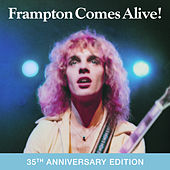
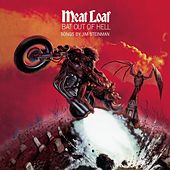
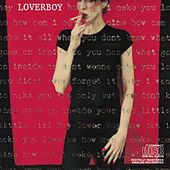
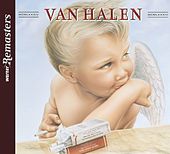
No comments:
Post a Comment